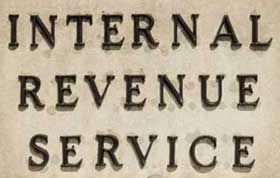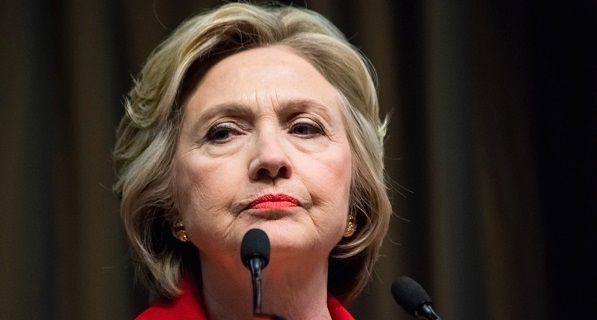 Captive insurance news stories are being published and shared more frequently than ever before. The industry is growing at a rapid pace, garnering the interests of business owners looking for effective alternative risk management solutions. More mid-market companies are forming captives as a way to cover under or uninsured business risks and to take advantage of the ancillary benefits captives offer. As the economic climate improves, more businesses are becoming eligible for captive formation under the 831(b) tax election. New domiciles are emerging and more established ones are making changes to make it easier for business owners to own captives while remaining compliant.
Captive insurance news stories are being published and shared more frequently than ever before. The industry is growing at a rapid pace, garnering the interests of business owners looking for effective alternative risk management solutions. More mid-market companies are forming captives as a way to cover under or uninsured business risks and to take advantage of the ancillary benefits captives offer. As the economic climate improves, more businesses are becoming eligible for captive formation under the 831(b) tax election. New domiciles are emerging and more established ones are making changes to make it easier for business owners to own captives while remaining compliant.
These changes and more are reported frequently by the media; these stories are a reflection of a thriving industry. We are committed to sharing captive insurance industry news with the public—transparency into the industry fosters confidence for operating business owners who are considering captive formation. The news articles we publish on our website originate from trusted resources; they aim to squelch misinformation and misnomers with facts, proven data, and commentary from experts in the industry.
We hope you will find these captive insurance news, articles, case studies, podcasts, videos and resources to be educational, insightful, and intriguing.
Editor’s Notes: As of CURRENT_YEAR, Capstone has been operating for CAP_YEARS_NUMBER years and has formed over CAPTIVE_FORMATIONS captives. As of CURRENT_YEAR, The Feldman Law Firm has been operating for LAW_YEARS_NUMBER years and has successfully resolved over TAX_CONTROVERSIES tax matters. As of CURRENT_YEAR the cap on 831(b) captive insurance premiums is CURRENT_PREMIUM_CAP million.
 Tax Increases are Likely On the Way
Tax Increases are Likely On the Way
November 19, 2019 (Houston, TX) – The Wall Street Journal reports that tax increases are likely on the way for those in the top 0.2%. The Millionaires Surtax Act is a bill that would put an extra 10% tax on individual income above $1 million, or $2 million for married couples. This surtax would apply regardless of the income’s source—whether from long-term capital gains, currently taxed at a top rate of 20%, or wages, taxed at rates up to 37%.
The WSJ quoted Congressman Don Beyer as stating that the bill would “restore fairness to the tax code.” Ohio Senator Sherrod Brown, another backer, adds that the new surtax would ensure “the wealthy are paying their fair share.”
 Domestic Domicile Formations in 2016
Domestic Domicile Formations in 2016
February 21, 2017 (Houston, TX) - The industry publication, Captive Review, reports that Vermont licensed 26 captive insurance companies in 2016, with 29 liquidations.
Vermont is the largest U.S. domicile with 600 active insurance captives domiciled in the state. Its focus is primarily on large multi-national corporations and risk retention groups, and is not well-suited for mid-market captive insurance companies because of its regulatory requirements.
By way of further background, Tennessee, another significant domicile, geared more towards the mid-market but much smaller in terms of licensed captives, formed 25 new captives net of liquidations.
 President-Elect Plans To Change Tax Deduction Rules
President-Elect Plans To Change Tax Deduction Rules
January 6, 2017 (Houston, TX) - The Wall Street Journal reports that deductions and exemptions may be eliminated with the 2017 tax year and the Presidential election of Donald Trump. New plans proposed by the President-elect and other political groups are taking aim at “itemized” deductions and rising income-tax rates.
The Trump camp is proposing a reduction in the number of taxpayers who itemize individual deductions by increasing the lump-sum amount, or “standard” deduction. With this proposal, deductions such as state and local taxes, mortgage interest, charitable donations, and medical expenses may not be available in 2017.
Currently, about 30% of filers itemize their deductions, and the percentage rises sharply with income. In 2014, taxpayers earning more than $5 million deducted $2 million, according to the latest IRS data.
 Why 4,400 People Aren't Planning Around Estate Tax
Why 4,400 People Aren't Planning Around Estate Tax
August 2, 2016 - The Wall Street Journal reports that 4,400 people -- a relatively small number in a country of more than 325 million -- are expected to have taxable estates this year. The estate tax, which has now been in existence for 100 years, obligates taxpayers to pay up to 40% of their net assets at death, above an adjusted floor currently being $5.45 million per taxpayer ($10.9 million per couple). The estate tax has seldom raised a significant part of the federal budget, and not surprisingly, has drawn strong criticism over the years.
The estate tax applies to fewer than 2% of those dying each year. Those who do have taxable estates have an opportunity to plan around it, lawfully minimizing the tax.
Qualified owners of closely-held businesses who form a captive insurance company can address broad-based risks with comprehensive coverages and leverage the planning with ancillary benefits.
 The IRS Faces Budget Cuts, Taxpayers Still at Risk
The IRS Faces Budget Cuts, Taxpayers Still at Risk
June 9, 2016 (Houston, TX) - The Wall Street Journal reports that the Internal Revenue Service is still having operational problems, exacerbated by a lack of funding. Major budget cuts that began in 2010 have strained the agency's ability to pursue its mission. While the Democrats controlled Congress in 2009 and 2010 giving the IRS more responsibility and power, the agency misused it in ways that included its inappropriate scrutiny of groups seeking tax-exempt status. This prompted executive firings and years of Congressional investigations, which continue to this day. The agency is still reeling from these errors in judgment.
 Businesses Win Big with Reinvestment Strategies
Businesses Win Big with Reinvestment Strategies
June 7, 2016 (Houston, TX) - The Wall Street Journal reports about U.S.companies avoiding current federal income taxes on their overseas profits. As seen by the pharmaceutical giant Pfizer, businesses reinvest foreign earnings in non-U.S. activities abroad so as to avoid funds from being taxed when they are otherwise transferred back to the U.S. While most countries tax only the money companies earn inside their borders, the U.A. taxes profits that American companies make worldwide at 35%, minus any foreign taxes paid. still, accounting regulations and auditing standards make it relatively easy for U.S.-based business to avoid taxes on tehri overseas profits.
 Jeff Simpson/Gordon, Fournaris Client Suffers $4 Million Defeat
Jeff Simpson/Gordon, Fournaris Client Suffers $4 Million Defeat
November 11, 2015, (Houston, TX) - PoolRe Insurance Corp. and others announce the settlement of a long-running case against Organizational Strategies, Inc. , a defense contractor based in Virginia. The settlement, concluded in the last few days, paid in excess of $2.2 million to PoolRe and others by OSI and its owners, Nicolette and William Hendricks.
Among other issues, in 2011 OSI made demands to improperly manipulate the pooling arrangement administered by PoolRe, which PoolRe and its captive manager and other advisors considered unlawful. The ultimate result was that OSI and its affiliates were excluded from the 2012 insurance pooling arrangement.
 Audits are Down, Taxpayers Still at Risk
Audits are Down, Taxpayers Still at Risk
March 30, 2016 (Houston, TX) - The Wall Street Journal reports that the Internal Revenue Service has so far this year improved its wait times for taxpayers, but problems still remain. Audits are still down, but problems such as cyber attacks have left the Agency and taxpayers vulnerable. The issues are perpetuated by a lack of funding--even after an influx of dollars from the U.S. government. In the first week of March, the IRS answered 73% of calls o nits toll-free telephone lines, more than double waht it did in 2015, according to agency data that shwo consisten improvement this year. The average wait time is now about nine minutes, down from 21 minutes.
The article states that the IRS is cracking down on tax fraud but with fewer workers. The agency had 17.208 employees during tax enforcement in 2015, down 24% from 2010. Its workforce is aging and only about 200 of its 85,000 workers are age 25 and under. IRS time spent auditing the largest companies declined 47% from 2010 to 2015, according to the Transactional Recors Access Clearinghouse at Syracuse University.
 Hillary Clinton Proposes 4% Income Tax Surcharge
Hillary Clinton Proposes 4% Income Tax Surcharge
March 24, 2016 (Houston, TX) - The Wall Street Journal reports that Presidential candidate and former Secretary of State, Hillary Clinton, is proposing a 4% income-tax surcharge on the wealthiest Americans that would restore the top tax rate to levels not seen in 30 years.
Clinton's proposal goes beyond the so-called “Buffett Rule," which would impose a minimum 30% tax on those with adjusted gross incomes of more than $2 million. The 4% surcharge would be assessed on top of the 39.6% top income-tax rate, not including payroll taxes or the 3.8% tax on unearned income. Although Clinton's and other similar proposals are far from being enacted legislation, several presidential candidates are pushing for higher tax rates on corporations and high-income earners.
 Federal Reserve to Raise Interest Rates
Federal Reserve to Raise Interest Rates
March 15, 2016 (Houston, TX) - The Wall Street Journal reports that the Federal Reserve is raising interest rates inherent in wealth transfer transactions. Wealthy clients should consider implementing strategies before rates climb further.
Interest rates affect estate and income-tax planning. Clients implement planning strategies such as intra-family loans, grantor retained annuity trusts, qualified personal residence trusts, and charitable remainder annuity trusts to mitigate the adverse effects of increasing tax rates. Clients should consider all planning options. Among them is a captive insurance arrangement which provides comprehensive risk coverage, along with ancillary planning benefits for closely-held businesses.
Older Captive Insurance Industry News
A Private Tax System That Saves Billions
March 8, 2016 (Houston, TX) - The New York Times reports that increased tax rates for "wealthy" Americans is on the horizon.
Traditionally, at least until recently, effective federal income tax rates for high-income individuals have remained low, as various planning strategies were utilized and as rates have been at historic lows. From Mr. Obama’s inauguration through the end of 2012, federal income tax rates on individuals changed little (excluding payroll taxes). The highest-earning Americans went from paying an average of 20.9 percent to 17.6 percent. By contrast, the top 1 percent, excluding the very wealthy, remained at about a 24 percent tax rate.
How States' Regulatory Structures Measure Up
March 1, 2016 (Houston, TX) - The industry publication Captive Review reports that both the state and the federal governments are working to enact new captive legislation.
The role of state insurance regulators is to ensure that licensed captive insurance companies operate in compliance with applicable state insurance laws. Capstone explains that it takes years for states to develop a workable regulatory infrastructure. By way of example, Texas is still in its infancy in terms of captive insurance regulation. Its Department of Insurance began licensing captive insurance companies in 2013, yet Texas, the third-largest state, has only licensed 25 captives. To be sure, building a viable domicile takes years. Passing enabling legislation is only the beginning.
Other states have been working for years to develop their regulatory structure, such as Delaware and Vermont. These states have a 10 - 30-year head start over the new states like Texas and Illinois. Yet, with the passage of the Dodd-Frank Act and the desire of states to collect the IPP or self procured premium tax, there is a tendency to consider "home state formations." The whole area is in flux, yet state tax needs to be considered in designing any captive arrangement.
Tax Trade Troubles Linger at Bank of America
February 24, 2016 (Houston, TX) - The Wall Street Journal reports that Bank of America has dismantled a trading group which assisted clients with avoiding withholding taxes on dividends. Bank of America had come under scrutiny on how it handled these dividend-tax trades.
Alternative risk planning, which includes the formation of a captive insurance company, provides owners of closely-held middle-market businesses with comprehensive risk coverage, along with planning benefits. New captive legislation has increased the ceiling on tax-deductible premiums to $2.2 million from $1.2 million beginning with the 2017 tax year. Those seeking to cover risks not covered in their existing insurance program are good candidates for captive formation.
The Record Under Obama - Taxing the Rich
February 17, 2016 (Houston, TX) - CNN Money reports that President Obama proposes to raise taxes on the "rich" in his 2016 budget. An increase in investment taxes and measures to close estate tax planning could take effect before he leaves office.
Obama's track record for increased taxes on high-income taxpayers continues as he looks to "level the playing field" in order to cover increased government spending. Under Obama, the average federal tax rate paid by the top 1% of households has gone up more than 6 percentage points to an estimated 33.8%, according to the Tax Policy Center. Other tax hikes have included a higher Medicare tax on top wages, higher capital gains, and increased dividend tax rates for those with taxable income over $400,000. Rates on dividends and long-term capital gains are 20%, a full 33% increase from the Bush-era 15% rate.
Economists Say to Tax the Rich at 90 Percent
February 2, 2016 (Houston, TX) - Huffington Post reports that some economists are calling for an increase in federal income tax rates for high-income individuals, to 91 percent.
A working paper written by economists Fabian Kindermann from the University of Bonn and Dirk Krueger from the University of Pennsylvania argues that a top marginal tax rate in the range of 90 percent would decrease both income and wealth inequality and cover government expenditures.
These "scholars" also argue that economic prosperity would be attained by all taxpayers. "If rates are high for the top earners and low for everyone else, there's a big chance you will pay for a low rate and a small chance you will pay a high rate," said Krueger.
Case-in-point: Democratic presidential candidate Hillary Clinton said that she wants to go further than President Obama in raising taxes, proposing that millionaires pay no less than 30% in taxes on their income.
Bermuda Reinsurance Company Winds Down Amid IRS Scrutiny
January 29, 2016 (Houston, TX) - A recent New York Times article discusses one of the largest hedge fund’s use of an offshore insurance arrangement as part of its trading operations.
Captives have a broad range of benefits, extending well beyond providing traditional insurance coverage areas. To be sure, the other side of the balance sheet concerns the captive’s investment operations. For the last two decades, both Capstone and The Feldman Law Firm LLP have been the recognized leaders in designing and implementing a range of insurance programs for various types of captives. We look forward to answering your questions and evaluating how a captive might apply to your business.
Hillary Clinton Proposes Tax Hikes for Top Earners
January 27, 2016 (Houston, TX) - Bloomberg reports that Democratic presidential candidate Hillary Clinton will unveil proposals this month that will raise the effective tax rates paid by top earners.
In a statement released during a December campaign stop, Clinton reiterated her plans to block corporate inversions (tax strategies where businesses move their corporate headquarters and in some cases, their operations, to lower-taxed countries).
The former first lady also criticized current tax policies, arguing that it is unfair for high earners to pay a lower rate. "A quarter of the highest-earning taxpayers...pay a federal income tax of less than 20 percent," she said. As president, I'll do what it takes to make sure the super-wealthy are truly paying their fair share."
Owners of closely-held businesses can mitigate risk through a captive insurance arrangement that offers comprehensive risk management and which funds future losses on a pre-tax basis.
Cyber Insurance Market is Evolving
December 30, 2015 (Houston, TX) - Insurance Journal reports that insurance coverages for cyber risks are on the rise. The insurance industry paid out more than $400 million in cyber claims in 2014 alone.
Home Depot's well-publicized cyber breaches cost it $62 million. Target's breach cost the retailer $148 million and its CEO, Gregg Steinhafel, his job.
The insurance market for cyber risks is evolving -- five years ago, insurance products covered privacy breach response, including review and remediation of data systems. Now, cyber coverages are addressing business interruption, system damage, and more.
There are few primary underwriters that have the expertise and the experience to offer comprehensive cyber risk coverages and the cost of comprehensive coverages is significant. As a result, captives have seen an increase in the offering of cyber coverages.
Business owners should continue to be proactive in their risk planning. A captive insurance arrangement offers customized and more comprehensive coverages for cyber-related risks along with other tailored coverages.
Exclusions Could Lead to Lawsuits
December 28, 2015 (Houston, TX) - Industry publication Risk & Insurance reported that limitations or exclusions in commercial insurance policies could lead to costly lawsuits. A prime example is the recent flooding in Thailand, which caused $39.4 million in property damage to a Thai facility owned by Federal-Mogul Corp. The flooding also resulted in a “time element loss” of $25.1 million.
Federal-Mogul submitted claims to Insurance Co. of the State of Pennsylvania and the insurer only paid $30 million under the $200 million flood policy. The insurer rejected the time-element claim, relying on the exclusions in the policy. A captive property may have covered these exclusions.
States Leading in Employment Litigation Lawsuits
December 24, 2015 (Houston, TX) - The publication Risk & Insurance reports that employment practice lawsuits are on the rise for small and middle-market businesses (SMBs). An analysis conducted by the The Equal Employment Opportunity Commission ("EEOC") identified the states that were most at risk for these types of lawsuits.
Employment Practices Liability Insurance (EPLI) is a common coverage through captive insurers. Even where there is commercial insurance, a captive often has a supplemental or excess EPLI in place to provide comprehensive coverage.
One in five small and medium-sized businesses will face employment charges with an average defense cost of $125,000. The median judgment for cases that are tried is approximately $200,000. There have been significant spikes in employment litigation and businesses are increasingly proactive in mitigating potential losses stemming from employment practice and class action lawsuits.
Tax Court Issues Favorable Captive Insurance Ruling
December 2, 2015 (Houston, TX) - The U.S. Tax Court recently ruled in favor of the captive insurer in R.V.I. Guaranty Co., Ltd. In doing so, the Tax Court further clarified the definition of an "insurance risk" for federal income tax purposes in a taxpayer-favorable manner, adopting positions long advocated by Capstone. This Tax Court decision overrules current IRS administrative guidance.
Courts have long held that for insurance payments to be deductible for federal income tax purposes, the policies must cover an "insurance risk." The IRS previously had claimed that investment or business risk was not insurable and issued a technical advice memorandum (TAM 201149021) in 2011 stating that policies insuring against the decrease in the residual value of an asset were not insurance for federal income tax purposes. The Service reasoned that such policies covered only investment risk and not insurance risk.
The IRS took this approach in challenging residual value insurance policies issued by the taxpayer in R.V.I. The taxpayer issued insurance policies to companies that leased depreciable assets. The policies covered the risk of loss on termination of the lease if the actual residual value of the leased property were less than the projected residual value. The IRS argued that the policies did not cover an insurance risk and therefore claimed that the taxpayer was not an insurance company for federal income tax purposes.
The U.S. Tax Court rejected all of the IRS’ arguments in holding that the policies issued by the taxpayer covered insurance risk for federal income tax purposes. In reaching this conclusion, the Tax Court stated that residual value insurance policies were uniformly treated as insurance by the states regulating the taxpayer as an insurance company and by the external auditors in accordance with statutory insurance accounting principles. Furthermore, the Tax Court noted that residual value insurance is commonly considered insurance in the marketplace.
Thus, the tax court refused to adopt a special rule for federal income tax purposes with respect to what constitutes insurance risk. If insurance risk is present for non-tax purposes, then it is treated in the same manner for federal income tax purposes. In essence, the Tax Court held that the IRS does not get to decide what constitutes insurance when the characterization is otherwise clear for non-tax purposes. As a result, the R.V.I. case marks another significant loss for the IRS as to captive insurance arrangements.
Capstone administers the design, implementation, and management of captive insurance arrangements, providing risk coverage for middle-market organizations. Middle market businesses may obtain tailored risk coverages and fill in gaps in their existing commercial policies with a captive insurance arrangement. Insurance premiums paid to the captive insurer are made on a tax-deductible basis.
IRS Audits of Individuals Drop to 11-Year Low
November 18, 2015 (Houston, TX) - The Wall Street Journal reports that IRS audits of individual taxpayers fell to the lowest rate in 11 years. The Service's Commissioner reports the lower frequency of these audits is a direct result of budget cuts.
The IRS audited 0.84% of individual taxpayers in fiscal 2015, the lowest level since 2004. The Service reports that revenue from audits declined by 41% to $7.3 billion and fell to the lowest level since 2002. The IRS has 22% fewer auditors than it had five years ago, when it audited 1.1% of individuals.
Capstone administers the design, implementation, and management of captive insurance arrangements, providing risk coverage for middle-market organizations. Middle market businesses may obtain tailored risk coverages and fill in gaps in their existing commercial policies with a captive insurance arrangement. Insurance premiums paid to the captive insurer are made on a tax-deductible basis.
Global Tech Firms Brace for New Tax Rules
November 3, 2015 (Houston, TX) - The business press reports that new rules could force multinational tech companies to pay greater income taxes in more countries where they operate. Tech giants such as Google and Facebook have been put under close scrutiny. By way of example, the Wall Street Journal reports that these multi-nationals generate significant revenue in many European countries but pay very little in income tax.
The Organization for Economic Co-operation and Development issued recommendations aimed at large companies that have minimized their tax obligations through financial structures that are legal, but are under increasing political pressure.
The impact of these recommendations has yet to be seen. First, the new rules will need to be enacted through tax treaties and then be subject to scrutiny by national tax authorities.
Capstone administers the design, implementation, and management of captive insurance arrangements, providing exceptional risk coverage for middle-market organizations. Middle market businesses may obtain tailored risk coverages and fill in gaps in their existing commercial policies with a captive insurance arrangement. Insurance premiums paid to the captive insurer are made on a tax-deductible basis.
Impact: Offshore Voluntary Disclosure Program
October 28, 2015 (Houston, TX) - Accounting Today reports that the Internal Revenue Service has collected more than $8 billion from its Offshore Voluntary Disclosure Program (OVDP). The program enables taxpayers to correct prior tax reporting omissions and come forward to tell the IRS about previously undisclosed foreign assets.
The OVDP helps taxpayers avoid costly penalties resulting from non-compliance with their tax obligations. Since the OVDP began in 2009, there have been more than 54,000 disclosures.
Other actions, such as the Foreign Account Tax Compliance Act (FATCA) and intergovernmental agreements are also giving the IRS an unprecedented amount of information on foreign holdings of U.S. taxpayers. Those involved in the Department of Justice's Swiss Bank Program are working with Swiss banks that allowed businesses to house dollars in Switzerland. The program encourages Swiss financial institutions to disclose the names of businesses that may have evaded U.S. taxes in prior years.
Capstone administers the design, implementation, and management of captive insurance arrangements, providing exceptional risk coverage for middle-market organizations. Middle market businesses may obtain tailored risk coverages and fill in gaps in their existing commercial policies with a captive insurance arrangement. Insurance premiums paid to the captive insurer are made on a tax-deductible basis. Most captives are domiciled in U.S. jurisdictions.
'Inversion' Deals, Foreign Takeovers Continue
October 2, 2015 (Houston, TX) - The Wall Street Journal reports that foreign takeovers of U.S. businesses continue to soar. The steep 35% corporate income tax rate in the U.S. relative to the rest of the world has fueled a global mergers & acquisitions boom amid Washington’s efforts to hold on to corporate tax dollars.
Inversion transactions are popular. For example, Canada-based Valeant Pharmaceuticals International Inc. plans to use an “inversion” structure, which would save $560 million in taxes over a 5-year period for acquired Salix Pharmaceuticals Ltd. The significant tax savings realized by foreign buyers enables them to offer higher prices for takeovers than U.S. acquirers. Inversions have struck a political nerve.
Capstone Associated administers the design, implementation, and management of captive insurance arrangements, providing exceptional risk coverage for middle-market organizations. Middle market businesses may obtain tailored risk coverages and fill in gaps in their existing commercial policies with a captive insurance arrangement. Insurance premiums paid to the captive insurer are made on a tax-deductible basis.
More Large U.S. Companies Move Abroad to Cut Taxes
August 26, 2015 (Houston, TX) - The Wall Street Journal reports in separate announcements and in unrelated transactions that Coca-Cola Enterprises Inc. ("CCE") and CF Industries Holdings ("CF") move each of their legal headquarters to the U.K. for tax purposes.
In these "inversions," U.S. companies move their legal home abroad. Large U.S. companies have undertaken inversions because of the relatively unattractive U.S. posture faced by multi-national companies. Both companies’ tax rates are expected to land well below the U.S. statutory rate of 35%. Analysts expect CF to face only a 20% tax and CCE 26%-28%.
Capstone administers the design, implementation, and management of captive insurance arrangements, providing exceptional risk coverage for middle-market organizations. Middle market businesses may obtain tailored risk coverages and fill in gaps in their existing commercial policies with a captive insurance arrangement. Insurance premiums paid to the captive insurer are made on a tax-deductible basis.
Microsoft Pays 3.1% Income Tax on Non-U.S. Profits
August 24, 2015 (Houston, TX) - Bloomberg reports that Microsoft's untaxed, non-U.S. profits rose to $108 billion--a 17% increase over the prior year. If this foreign stockpile of cash were moved to the U.S., the U.S. tax code would require the tech giant to pay about $35 billion in additional income taxes.
In contrast, non-U.S. profits are taxed only when repatriated to the U.S. (typically at a 35% tax rate). It is estimated that U.S. companies currently have more than $2 trillion amassed outside the country. Unfortunately, this U.S. tax policy encourages American companies to invest profits in foreign operations, thereby draining U.S. jobs. By way of example, Microsoft bought Luxembourg-based Skype in 2011 as a way to use its tens of billions of non-U.S. cash, otherwise sitting idle.
Middle market businesses may obtain tailored risk coverages and fill in gaps in their existing commercial policies with a captive insurance arrangement designed and administered by Capstone. Insurance premiums paid to the captive insurer are made on a tax-deductible basis. Capstone together with The Feldman Law Firm LLP administers and oversees property & casualty captive insurers domiciled in well regarded domiciles both in the U.S. and abroad.
More Captive Insurance News
Estate Tax Remains in Effect
Update: Senate Finance Committee Proposal on 831(b) Captives
Tax Update on the Captive Insurance Industry
New York Times: Lowest Chance of An IRS Audit in a Decade
Re: The IRS' List of "Abusive Tax Schemes"
U.S. Tax Court Validates Another Captive Insurance Arrangement
Captive Insurance Companies Still On The Hook For State IPP Taxes?
Convert Self-Insured Risks into Tax-Deductible Premiums
Delaware Insurance Commissioner Visits Houston
Captives are Key Topic at Insurance Roundtable
Florida Captive Insurance Law Lures New Captives
Captive Insurance Manager Bullish on Captive Growth
Captive Insurance Industry Coalition Addresses NRRA Confusion



